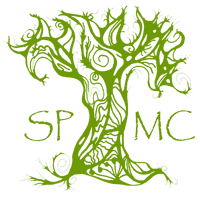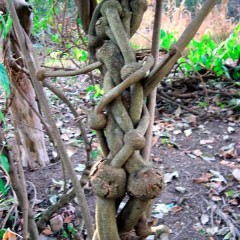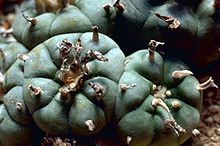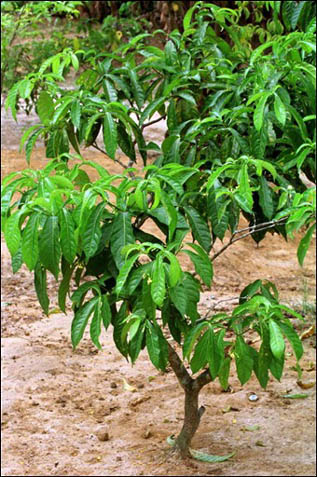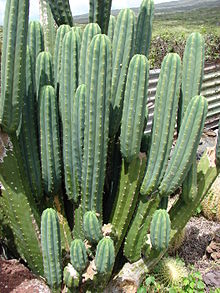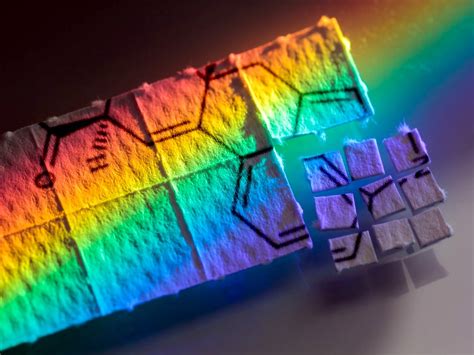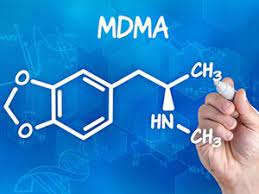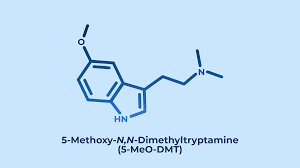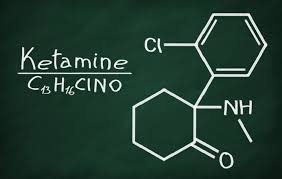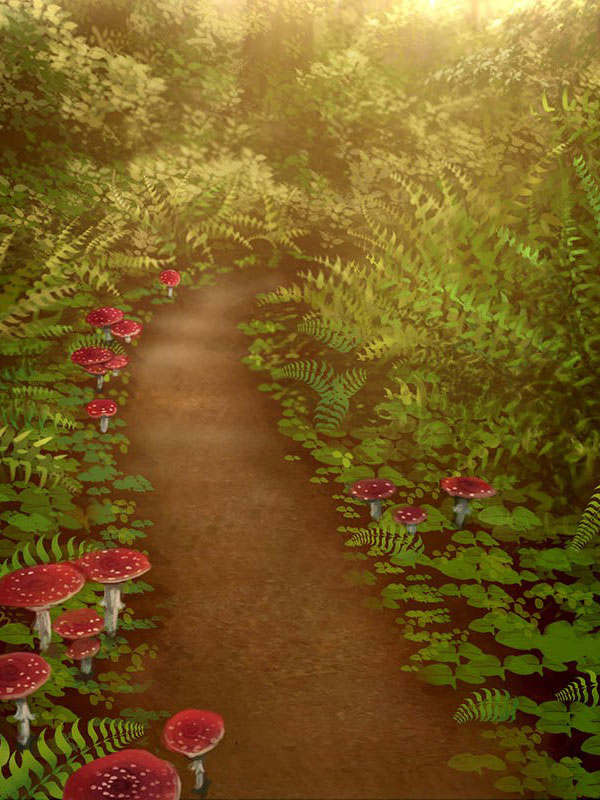The “Great Medicines”- an Introduction
There are certainly more “Great Medicines” than you’ll see described here. Along with the more recently discovered semi-synthetic and synthetic medicines, mind-altering, healing, awakening plants have been with humanity everywhere and always. What follows is short descriptions of those most implicated in this essential work at this time and most likely to play major roles in the years ahead.
Ayahuasca: Vine of the Soul
Ayahuasca is a powerful healing and visionary brew which has been used for at least hundreds and most likely thousands of years in a vast area of Amazonian South America that includes parts of western Brazil, eastern Ecuador, Peru, Colombia, and sections of the Orinoco basin where Brazil and Venezuela meet.
The brew is a mixture of at least two essential ingredients, a DMT- (dimethyltryptamine) containing plant, typically Psychotria viridis, also called Chacruna, and the Banisteriopsis caapi vine which works in harmony with the DMT to make it orally active.
Ayahuasca has a rich legacy of associated traditions, myths, therapies, rituals and aesthetics, spanning from the primordial roots of the indigenous tribes of South America, to diverse syncretic spiritual movements emerging across the planet.
Ayahuasca has spread around much of the world now and is probably the most frequently encountered of the so-called “major” psychedelics (with psilocybin mushrooms following closely behind in some regions.) The “Vine of the Soul” needs careful, intelligent stewardship now that it’s in so many hands and lands.
Cannabis: The Sacrament of Peace
Cannabis and humanity are intimately related. Considering the generous presence of welcoming cannabinoid receptors in our brains and nervous systems, it appears we may even have evolved in tandem. It is one of the oldest known cultivated plants on Earth and appears in the record from the dawn of civilization in China and other parts of Asia.
As well as its multitude of traditional uses for everything from household products to medicine, cannabis has a long and deep history of spiritual use in many parts of the world. While in recent times it has often been misunderstood, maligned, and misused, our task now is to re-honour and reclaim this remarkable plant.
Peyote: The Heart of the Great Spirit
Lophophora williamsii, as the academics have dubbed it, is a small, spineless cactus whose natural habitat is the Chihuahuan Desert area extending from north/central Mexico up to southern Texas. The peyote cactus has most likely been helping humans with great kindness and wisdom longer than anyone will ever know. Some Native origin stories place it at the beginnings of human existence, as a gift from the Creator to help the people remember who they are and where they came from. Native American deification of the plant is thought by scholars to be about 10,000 years old.
Spreading up throughout much of the western United States and beyond in the nineteenth and twentieth centuries, contemporary religious use of peyote, particularly in the context of the Native American Church, is vigorous. Elders say it is here to help us in this long-foreseen time of crisis and transformation.
Iboga: The Healing Root of Africa
Iboga is the name given to a shrub whose natural habitat is in equatorial West Africa. Though not yet well-known outside of that region, this plant medicine also has a long history of human use, particularly as a tool for psychological and spiritual healing. Ibogaine, its primary psychoactive alkaloid, was isolated in 1889 and has in recent decades been shown to have remarkable benefits of its own, especially in the treatment of addiction.
In West Africa, iboga is most often used as a sacrament of initiation in the Bwiti religion. Bwiti is a widely accepted and officially recognized religion in Gabon and in recent decades has spread to several neighbouring countries.
It’s interesting to note that Bwiti is considered a universal religion by its members, open to anyone of sincere intention. There is a powerful vision afoot that sees iboga and ibogaine, like others medicines addressed at the conference, playing an important role in the planetary healing journey.
Psilocybin: The Sacred Mushroom of Immortality
Evidence of psilocybin-containing mushrooms has been discovered as early as 9000 B.C.E. Where these mushrooms have appeared, and that has been nearly all over the world at various times, they would have been discovered, they would have been eaten, and their messages and teachings would have been experienced. This knowledge would have spread to others and become part of the cosmology of the people, except of course in times and places where powerful groups and individuals have attempted to control and mediate the spiritual experience of the people.
Though the lineages have been interrupted and the deep, ancient knowledge of ritual and healing use all but erased from the pages of history, the psilocybin mushroom Teonanacátl—“God’s flesh”— has much to teach ailing humanity at this time
San Pedro Cactus
San Pedro is a psychoactive cactus native to the Peruvian Andes. It’s also found in Argentina, Bolivia, Chile, and Ecuador, and is cultivated in other parts of the world. San Pedro, aka Huachuma, has a long history of use in Andean traditional medicine. Archaeological evidence indicates its use for healing and religious divination in the region for over 3000 years.
Today it’s widely known in these areas, where it’s used in traditional medicine and veterinary medicine. In humans the San Pedro cactus is prescribed to treat a variety of medical problems such as: nervous conditions, joint problems, drug addictions, cardiac disease, and high blood pressure.
The entheogenic status of the cactus remains as strong today as it has always been. Not only do its uses in shamanic trances and healing sessions continue, but it has also demonstrated effectiveness in the treatment of more recent problems such as alcoholism. The peyote cactus used widely by North American Native peoples is also considered a medicine against alcoholism and this parallel is all the more striking since both cacti contain mescaline.
There is good reason to believe that this unique cactus—potentially both powerful and tender—is poised to take a far greater role in the work ahead.
LSD: Albert Hofmann’s “Problem Child”
Of all the allies in this descriptive list, LSD (acid) has undoubtedly been the most controversial and generated the wildest tales in the more than 80 years since it was first synthesized by Dr. Albert Hofmann, a Swiss chemist working for Sandoz Laboratories.
Since then it has been used as a powerfully effective adjunct in psychotherapy; for bizarre and even cruel medical and military experiments; and for “recreational” and ceremonial use in settings ranging from careful and effective to irresponsible and dangerous.
Fortunately, after being shut down for legally sanctioned study and use for decades, this powerful and remarkable semi-synthetic psychedelic is being granted a new opportunity to prove its value.
MDMA: A Gentle Invitation to Insight
MDMA (3,4-methylenedioxy-methamphetamine,) aka Ecstasy or Molly, isn’t a psychedelic, or hallucinogen, per se. Rather, it is typically described as an empathogen (generating empathy) or an entactogen (to produce a touching within.)
This semi-synthetic medicine was synthesized sometime prior to 1912 by the German pharmaceutical company Merck. In 1976 the American chemist Sasha Shulgin pulled it off the dusty shelf so to speak. For several years its reputation as an effective adjunct to psychotherapy spread rapidly until it was dumped into the reviled Schedule 1 of the U.S. Controlled Substances Act in 1985.
Thanks in large part to the persistent efforts of MAPS, (Multidisciplinary Association for Psychedelics), MDMA is again being recognized for its remarkable potential as a therapeutic agent and poised to be legalized in multiple jurisdictions for such use.
5-MeO-DMT: The God Molecule
While 5-MeO-DMT was detected in the secretion of a toad endemic to regions of North America in 1965 and the isolated molecule was first synthesized in 1936 in Japan, it is arguably one of the new players in the field, increasing in use each year.
In optimal conditions and full “breakthrough” doses, “5” has been described as briefly inducing a state of pure non-dual consciousness, hence the “God Molecule” label. According to chad charles, “Although a DMT, this molecule apparently functions in a way different than other DMT variations/derivatives/analogues. The nature of the mystical experience induced by the ingestion of 5-MeO-DMT is extremely difficult to explicate, mostly due to the absence of a visionary component.”
We are certain to see and hear more of this extremely powerful agent in the years ahead.
Ketamine: In It’s Own Class
Ketamine is another “new kid” on the psychedelic block, though it was first synthesized by Parke-Davis chemist Calvin Stevens in 1962 in a search for a safe and predictable anesthetic. Since then it has been in common use in medical treatment facilities, and less so, in the underground—sometimes with the moniker “Special K.”
Ketamine has some distinct therapeutic advantages over most of the other psychedelics, (though some may not consider it a psychedelic by a narrow technical definition.) Most important for the moment is that it is an FDA-approved drug in the United States. This means it can be used by medical doctors and other appropriately licensed medical professionals. It also has the advantage of being much shorter-acting than other major psychedelics.
According to Arnault, Loshny, and Nobbs, 2022, “the psychological effects of ketamine can be seen as a powerful adjunct in effectively treating chronic pain, depression and other mental health conditions that have not been amenable to treatment with conventional remedies . . . “
Especially because of its legal head start, ketamine is receiving a lot of push these days. There may be pros and cons to that though. For example, doctors can use it therapeutically though they may have no previous experience whatsoever as psychedelic guides or therapists. For that and other reasons, as with many other related substances, intelligent, visionary advocacy and stewardship are essential as ketamine continues to find its place in healing and awakening work.
Honourable Mentions
As stated above, there are many other “Great Medicines,” far too many to list or describe here. New semi-synthetic and synthetic medicines are discovered with some frequency. For just one example, 3-MMC (3-Methylmethcathinone,) has recently been garnering interest as an adjunct in psychotherapy.
As well, there are many other plants around the world that have been used for their mind-altering properties. Plants like henbane, mandrake, and ololiuqui seeds jump quickly to mind in this regard.
One plant in particular deserves some mention here. Due to its often bizarre effects, most people who have tried Salvia divinorum run hastily in the opposite direction after one or two encounters. But as advocated by researchers and practitioners like Christopher Solomon, in lower doses and carefully protective settings, Salvia has great untapped potential as a beneficent healer. This unique member of the mint family, sometimes called “the leaves of the shephardess,” deserves a proper hearing and a chance to take its seat at the table of the “Great Medicines.”
